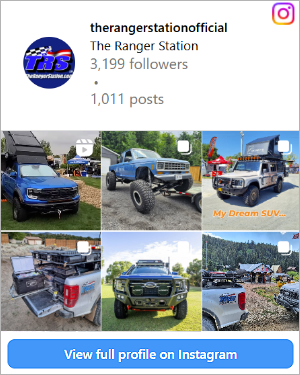For outright grunt to get the load moving the 2.9 has it. This is because of its torque being lower in the RPM's. My 3.0, being a highway beater with the 3.45 gears, so such little torque low end come to between 2000-2500 RPM suddenly you can feel the truck take off because it finally reached its power band area and is now producing enough Torque and lets not forget H.P. to actually move it and any weight in it.
My 3.0, With a load in it off the start it is a snail with lots of slipping the clutch to break the load free from a dead stop. For a truck, this bloody motor is useless but as a commuter and grocery getter it is ideal, because you are using it like a station wagon, where this motor belongs. Good gas mileage, with the 3.45 gears runs 2000 rpm @65 and 2500 @75 with power to spare but to load up the bed and a trailer even 4.10 gears can't help this motor move any better. Each motor has its strengths, 2.9 as a truck motor that is used to haul and the 3.0 as a commuter everyday driver motor.
Which one beats the other? This depends on the test. Do you need to haul weight and or up a hill or get to work efficiently? I have often considered the 4.0 swap in mine due to the low end torque that this motor seems to lack. I have also contemplated a cam swap to put the torque back lower in the RPM range but found it is easier just doing a motor swap for that. Neither of the two are ballsy GTFOMW motors but will and did make a good universal motor, albeit with different intakes for the applications. IMO the 3.0 should have never been put in the trucks. Even the newer model 3.0s with the higher specs came with caveats of needing higher RPM's to reach the max outputs. The issue is what happens when you first start to move that weight, low RPM's? High RPM's are for highways not grunt hill climbing work, I live in the mountains and know a thing or two about pulling weight up them. If you need to stop on a steep part getting back up to speed is a pain if you can't get the motor up to those RPM H.P. Torque producing area's.
If a motor can do the same work at 4,500 RPM as a motor at 2500 RPM which one will produce first and be quicker at it? The issue is getting the motor to the 4,500 RPM's to do the work. if the load is sever then the reaching the 4,500 RPM could take a very long time costing both production and fuel till it can reach there . This is where the 2,500 RPM engine shines.
As explained to me torque is what gets the item moving where as it takes both torque and horsepower to keep it moving and make it move faster. Think of a drag car, torque will launch the car from a stand still but after that it needs more Horsepower than Torque to get up to and keep pulling speed. Both are necessary, both are a measurement of power as mentioned earlier by some one, but because each measurement means something different about the power to compare them is next to impossible.
Lets go back the the 5 H.P B.S. motor versus a 500 HP motor. Both can be made to do the same amount of work, albeit one slower than the other. To get the 5 H.P. B.S. motor to pull the same weight as the 500H.P. motor you need gearing witch is adding Torque. This is to get it moving but because it is lacking in H.P. and in torque it does it a lot slower. This is just an example of how Torque plays into these two motors.
As I have mentioned before you can not test which motor will do better than the other with out exact same specs of a vehicle. There can not be a mechanical advantage to one over the other meaning it needs the same trans and gearing on both motors or the tests will be invalid. the weight of the vehicles must be the same or they are pull different weights making the test invalid.












